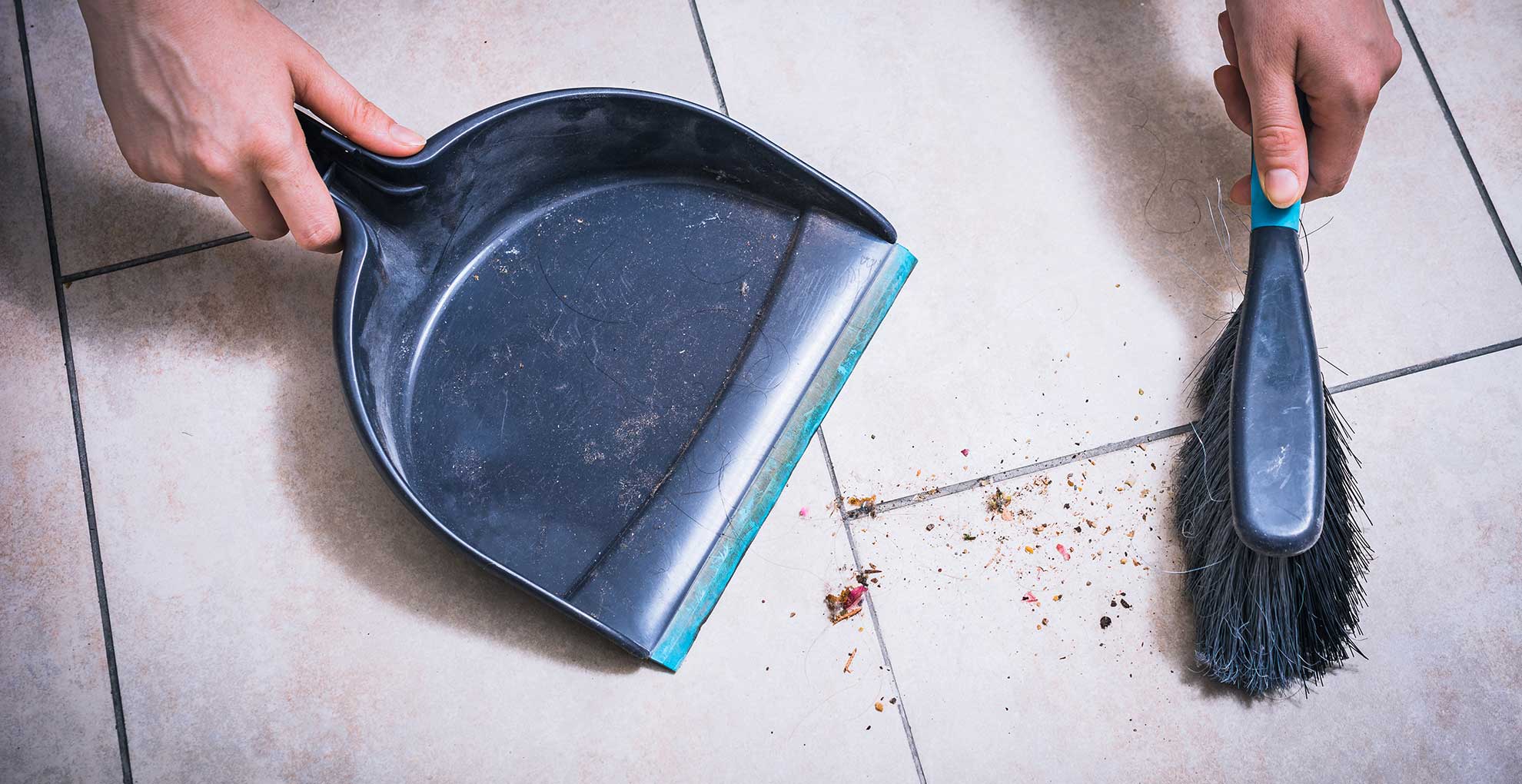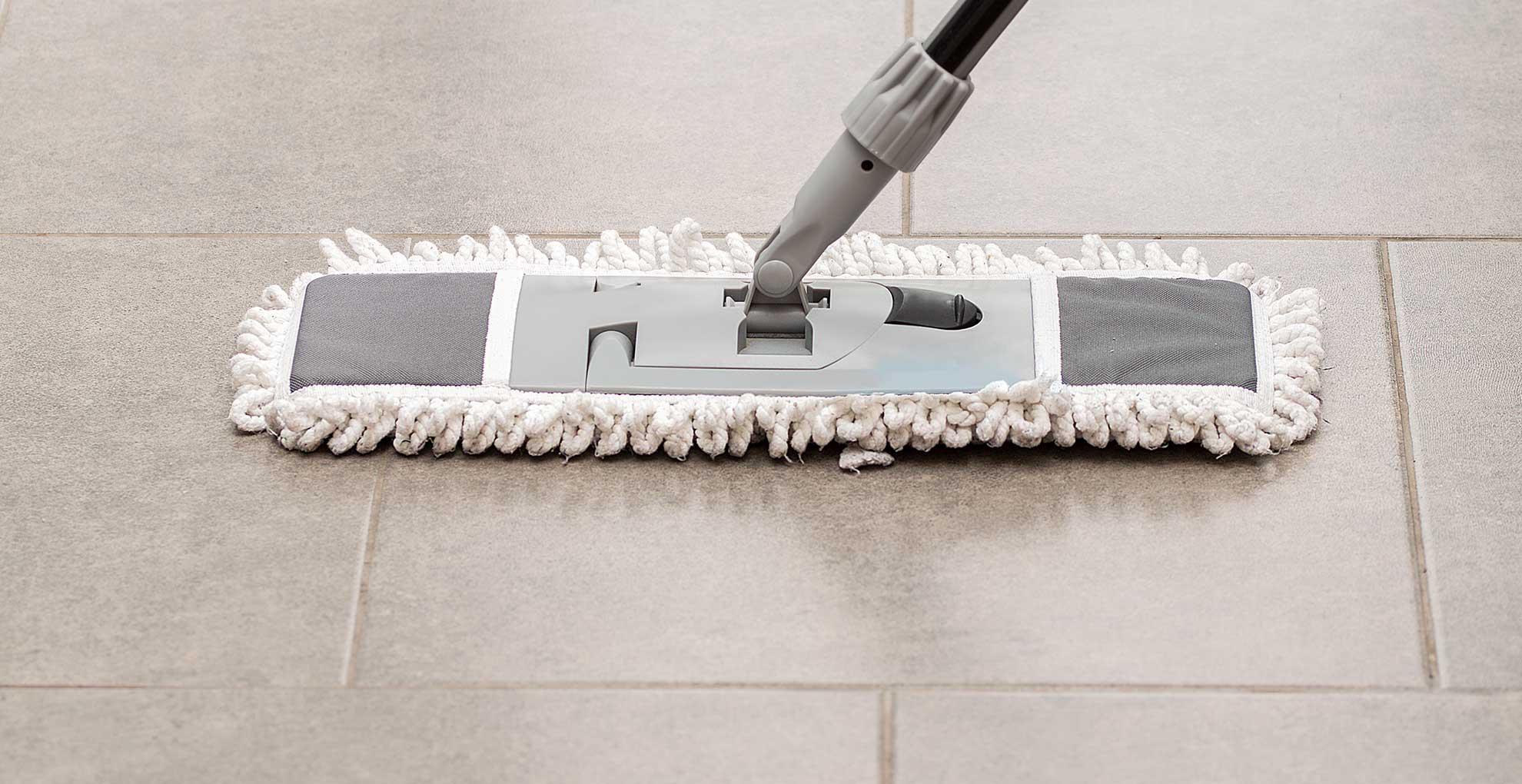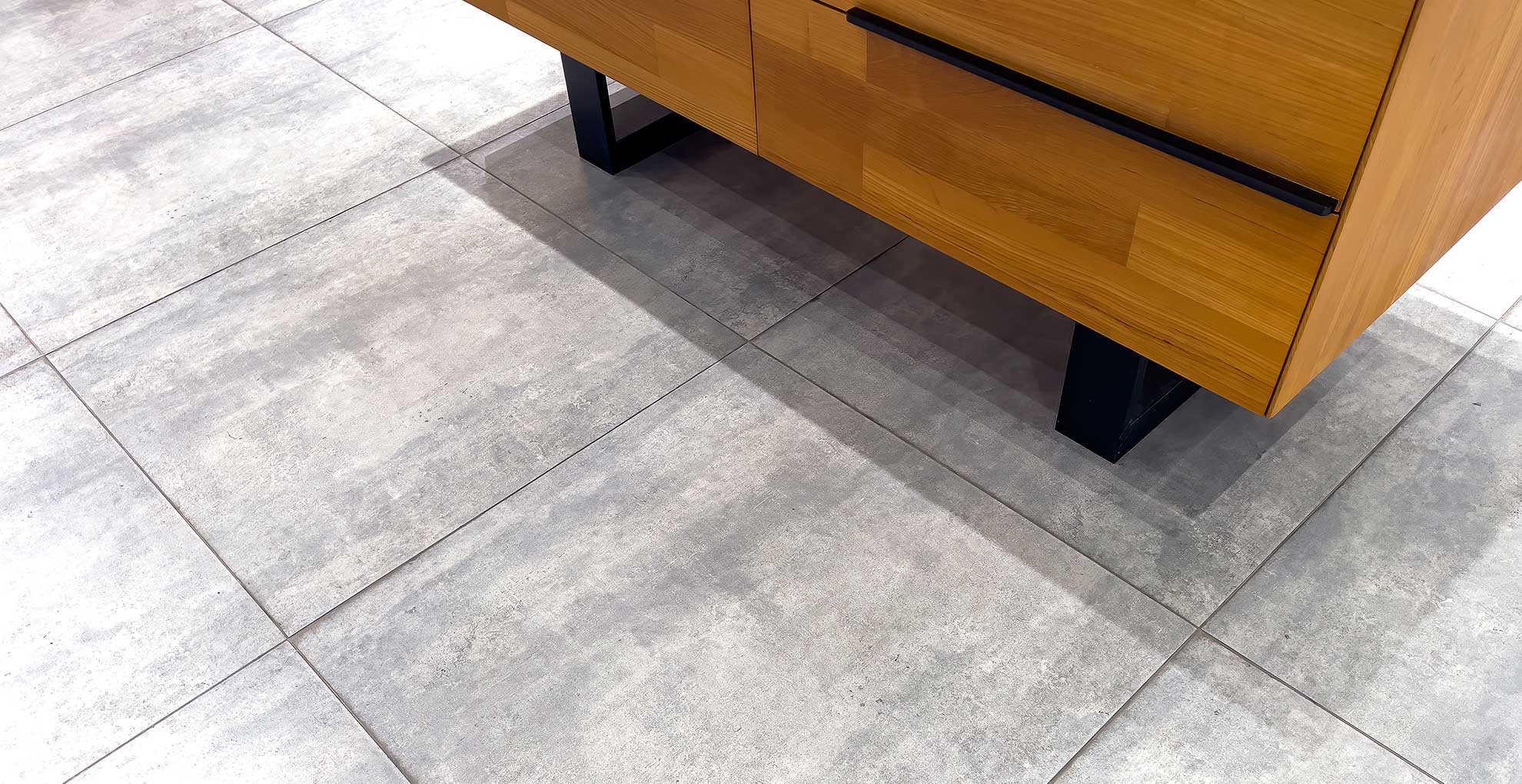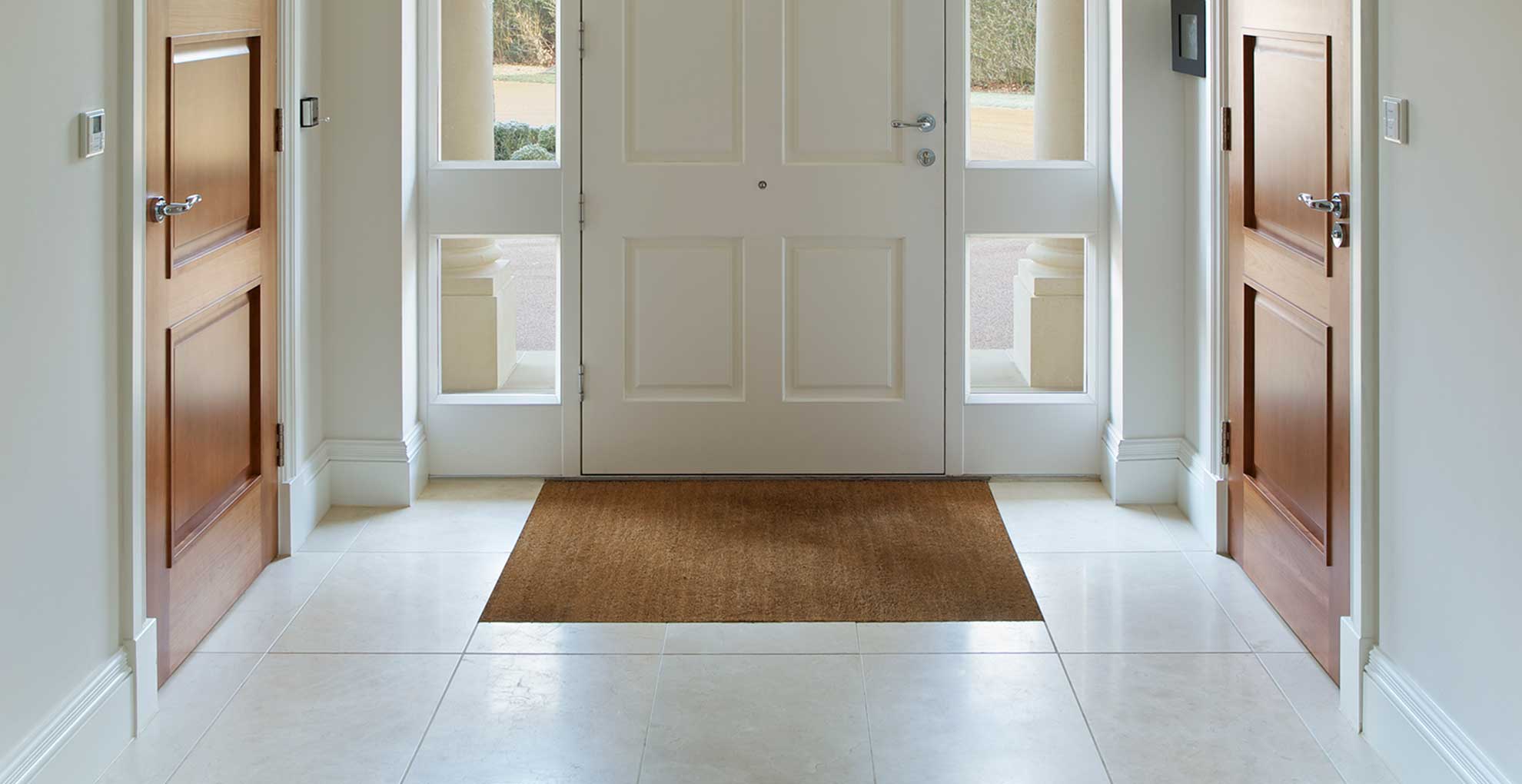How to clean tile floors for a sparkling finish every time
Getting a polished finish is easy when you know how to clean tile floors like a professional


Tamara Kelly
Learning how to clean tile floors will pay dividends in terms of aesthetics and cleanliness, safeguarding your investment in your home. If you've installed stunning tiles, you'll want to be sure you know how best to care for and maintain them, so they can serve you for the longest time.
There are some smart cleaning hacks and techniques that you can use to ensure your tiles are always sparkling clean and looking like new.
The cleaning steps below apply to most types of tile, including natural stone, ceramic, and porcelain. And as a bonus, they'll work when cleaning vinyl floors and linoleum floors, too. To help determine the best solution for your own floors our team of cleaning experts share their cleaning product recommendations for each tile type.
How to clean tile floors: a step-by-step guide
Mastering how to clean tile floors isn't too difficult with our expert guidance. The process is simple, with five simple steps to take into consideration that will help you keep tile floors in great condition, and we break each down into more detail below.
Here's what you'll need to clean tile floors:
- Soft-bristled broom or vacuum
- Dustpan and brush
- Mild floor cleaner or dish soap
- Microfibre cloth
- Grout brush or old toothbrush
- Mop
1. Sweep to remove dirt and debris

The first stage of cleaning your tiles should begin when they are dry. Sweep or vacuum them at least once per week, or whenever you can feel or see debris. Routine sweeping or vacuuming of your tiles helps remove most of the dirt before it becomes embedded in the grout or the tile itself.
Failure to sweep or vacuum will lead to granules of dirt lingering on tiles, specially textured tiles such as slate or marble. That layer of grit eventually corrodes the tile, dulling it and making it difficult to clean.
Sign up for the woman&home newsletter
Sign up to our free daily email for the latest royal and entertainment news, interesting opinion, expert advice on styling and beauty trends, and no-nonsense guides to the health and wellness questions you want answered.
While you can use an upright vacuum cleaner to clean your floors, with time it will start to scratch your tiles, especially if you are using a bare floor setting (even if it's one of the best vacuums). To avoid this, use a canister vacuum cleaner, and ensure that it has a brush floor attachment to prevent surface damage.
2. Mop using a mild floor cleaner

Next use a gentle cleaning solution, preferably one approved by the manufacturer, as this enhances the tile's shine, gloss, and color. If you're not sure which cleaner to go for, you can always use water and a pinch of dish soap to get the job done.
(REMOVE) You also use white vinegar and water (as long as your floors aren’t natural stone, see more on this below) as the two are all safe for use in homes where there are children and pets. (While you're at it, don't forget all the other cleaning uses to which you can put vinegar—check out how to clean windows and how to clean a showerhead with its help, too).
"Before applying the cleaning solution to the entire floor, it's recommended to test it in a small, inconspicuous area to make sure it doesn't cause any discoloration or damage to the tiles and grout," advises Fantastic Service's cleaning supervisor Lily Cameron.
Remember to always use the correct technique and cleaner for the particular tile you are cleaning. Check the manufacturer's instructions for your tiles, particularly if they were expensive as they tend to require more specialist care. For example, you shouldn't use a mop with stiff bristles to clean marble tiles, in the way that you wouldn't clean a stainless steel sink with a scratchy scouring pad.
When choosing the best product to use on your floors consider what type of tile you have:
- Ceramic and porcelain tiles: "PH-neutral tile cleaners are generally safe for cleaning ceramic and cleaning porcelain tiles, tiles and help remove dirt and grime without damaging the surface," Lily explains. "Besides those, Diluted mild dish soap can also be used for regular cleaning of ceramic and porcelain tiles. For these tile floors, avoid harsh acidic or abrasive cleaners, because they can scratch or etch the tile surface. If their grout and tiles are sealed, you can use the best steam cleaner without adding any cleaning solution to dampen and lift up any stick-on grime to make scrubbing easier."
- Natural stone tiles: These include marble, granite, slate, or travertine tiles. "Look for pH-neutral stone cleaners that are specifically designed for natural stone,' advises Lily. These are gentle and won't harm the stone's surface or sealer. "Natural stone tiles also often require periodic sealing to protect them from stains and damage," explains Lily. "Consult with a professional or refer to the manufacturer's instructions for the appropriate sealer. For these tile floor types, avoid acidic or abrasive cleaners as well."
- Vinyl tiles: Generally speaking vinyl tiles are pretty durable and easy to maintain. "Opt for gentle all-purpose floor cleaners that won't strip away the protective coating or damage the vinyl surface and avoid abrasive scrub brushes or cleaners that can scratch or dull them," suggests Lily.
- Glass tiles: "Glass tiles are more sensitive to scratches, so it's best to use non-abrasive glass cleaners or mild soapy water for routine cleaning and avoid cleaners with harsh chemicals or abrasive ingredients that can damage the surface," Lily warns.
3. Target tile grout

Your tile will only look sparkling if the grout is also clean. Tiles are held in place by a protective grout, which may be dark or light, or matching or contrasting with the tiles. Any lighter shades of grout will, with time and exposure dirt, become dingy and discolored. This will detract from the beauty of your tiles.
It is recommended that you clean your grout every few months, or as needed to help preserve your tile and grout. To clean grout, mix equal parts of water and hydrogen peroxide and apply it to the grout using a toothbrush to get rid of stains. You can also use oxygen bleach or baking soda, and water in equal measures. Rinse well and allow it to dry.
"Apply the cleaning solution directly to the grout lines and let it sit for a few minutes to loosen any dirt and stains,' says Lily. "After that, scrub the grout lines in a back-and-forth motion using a grout brush or an old toothbrush. Be thorough but gentle to avoid damaging the grout. Also, remember to rinse the brush or toothbrush frequently."
4. Remove residue
Cleaning with dish detergent soap can sometimes leave your tiles looking cloudy. To avoid this, use a non-abrasive liquid cleanser. Rinse the floor to remove any trace of the product.
"After you’re finished cleaning the tiles and grout, empty the bucket and refill it with clean, warm water,' says Lily. "Rinse the mop or microfiber cloth and go over the entire floor again to remove any remaining residue from the cleaning solution."
5. Dry with a cloth
Once you've mopped your tile, it's best to dry immediately using a clean microfiber mop or lint-free cloth as leaving them to air-dry will most likely create water spots, especially if you're using water that has heavy mineral deposits.
How often should I deep clean tile floors?
Depending on how often you clean your house your chores may vary, but generally speaking, experts say you should mop floors at least once a week. Cleaning kitchen floors and cleaning bathroom floors should always be the highest priority as germs tend to accumulate more in these areas.
We'd recommend deep cleaning all tiled floors at least once a month to keep them at their best. If your tiles are heavily soiled or extremely dirty, use a scrub brush and oxygen bleach solution to remove embedded grease and dirt. Make sure to rinse thoroughly using clean water to avoid breaking down the tile's coating.
When it comes to tile maintenance, it all depends on the type of tiles you have in your home. “For a very general maintenance routine, make sure you remove any dust or dirt before using cleaning products on your tiles, and for more high-traffic areas, damp mop your floor at least once a week to decrease wear and tear” suggests Amanda Telford, a tile experts at CTD Tiles.
You can also use a steam cleaner to deep clean tiles and get rid of ground-in dirt and gunk. But if your tile floors are beyond DIY help, you can call in a professional to help remove grime and other stubborn stains.
While Amanda adds: “For an increased layer of protection placing mats or rugs in front of communal spots like entrances/exits, kitchen sinks, and the stove is an effective method for reducing increased tile wear.”

Can you clean tile floors with vinegar?
While cleaning with vinegar seems to be the chosen method for all rooms and surfaces you should use it with caution on floor tiles because it's not suitable for certain natural stones such as marble, limestone, granite, or terracotta. Vinegar should be fine to use on modern ceramic tiles and porcelain materials. However, given that certain stones are among the things you should never clean with vinegar we would recommend avoiding using it altogether for cleaning tile floors because it's better to be safe than sorry.
How do you get professional results when cleaning tile floors?
While the steps above are highly effective for cleaning tile floors with ease, there are a few additional tips that can help achieve professional results with little effort.
- Regular maintenance is key to keeping tile floors and grout clean. Sweep or vacuum regularly to prevent dirt buildup, and promptly clean up spills to avoid staining.
- Use the right tools and products. Invest in high-quality ones, such as a microfiber mop, a grout brush, and a good-quality pH-neutral tile cleaner. Using the appropriate tools and products designed for the job will make the cleaning process more effective and efficient.
- Pre-treat stubborn stains and spills before mopping the entire tile floor. Apply a small amount of cleaner directly to the stain, let it sit for a few minutes to loosen the dirt, and then gently scrub with a grout brush or toothbrush.
- Follow a systematic approach. Divide the floor into smaller sections and clean one section at a time. This approach will ensure thorough cleaning without missing any areas. Start from one corner and work your way across the room.
- Allow cleaning solutions to sit on the grout lines for a few minutes before scrubbing. This will help it to penetrate and loosen dirt and stains, making it easier to remove.
- For stubborn stains on grout, use a paste by mixing baking soda and water. Apply it to the stained grout, let it sit for a while, then scrub gently and rinse.
- Use proper scrubbing techniques when scrubbing the grout. Be gentle but firm when applying pressure with a grout brush or toothbrush. Scrub in a back-and-forth motion along the grout lines. However, avoid scrubbing too hard, as it can damage the grout. Take breaks when needed to avoid strain.
- After rinsing the floor, use a dry microfiber cloth or mop to remove excess water and aid in the drying process. This will help prevent water spots and make the floor shine
- Protect and maintain grout. Consider applying a grout sealer after deep cleaning to help protect the grout from stains and make future cleaning easier.
Amy Hunt is an experienced digital journalist specialising in homes, interiors and hobbies. She began her career working as the features assistant at woman&home magazine, before moving over to the digital side of the brand where she eventually became the Lifestyle Editor up until January 2022. Amy won the Digital Journalist of the Year award at the AOP Awards in 2019 for her work on womanandhome.com.
- Tamara KellyLifestyle Editor